The Hindu mythology features two great epics-the Ramayana and the Mahabharata. While both of them are stories of conquest of the good over the evil, the Mahabharata is the story of the great battle between the Kauravas and the Pandavas. It says all about bravery, righteousness, truth and devotion towards family.
List of best characters of Mahabharata Gatha:
11. Barbarik
Barbarik, also known as Khatushyamji, is a character in Hindu mythology, particularly associated with the Mahabharata. He was the son of Ghatotkacha and the grandson of Bhima. Barbarik possessed divine powers and an unerring three arrows granted by Lord Shiva. His role is prominent in the Mahabharata’s Kurukshetra War, where he observed the battle as a spectator. Before the war, he pledged to support the weaker side. According to legend, his head was severed by Lord Krishna to fulfill his vow of impartiality, and Barbarik’s head remains worshiped as a deity in certain traditions.
- Also Read: Best Characters of Ramayana Gatha
10. Vidura
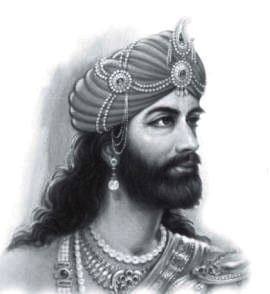
One of the best characters in Mahabharata Gatha is Vidura, the adviser in the kingdom of Hastinapur, who was loyal to the Pandavas during the battle as he wanted to side with the right. He was one of the people who objected to the humiliation of Draupadi in the Kuru court.
9. Abhimanyu
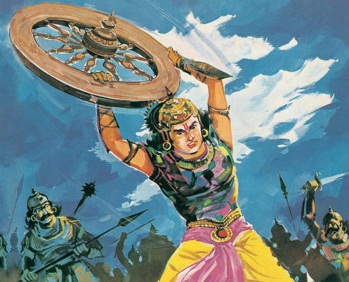
Abhimanyu was the son of Arjuna and Subhadra, who was amongst the bravest of the warriors in the battle of Mahabharata. He was able to break the Chakravyuha during the war, but was killed after doing so.
8. Dronacharya
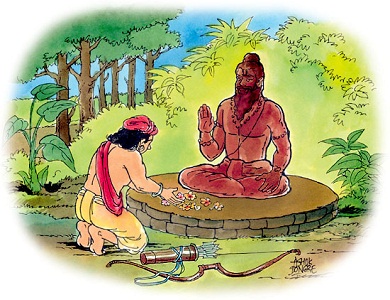
Dronacharya is another name among the best characters of the Mahabhrata Gatha. This brave teacher of Kauravas and Pandavas dedicated his life in the service of Hastinapur and fought for the Kauravas even on knowing that they were wrong.
7. Draupadi
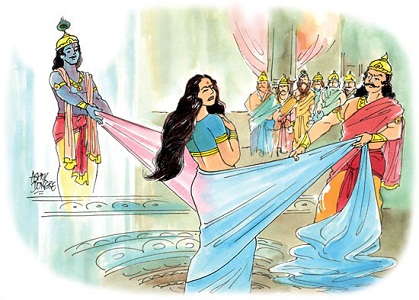
Drapuadi, the wife of the Panadavas, is another important character in Mahabharata and the real cause for the battle of Mahabharata. Despite being wronged by having to become wife of five husbands, Draupadi was devoted to all of them.
6. Bhima
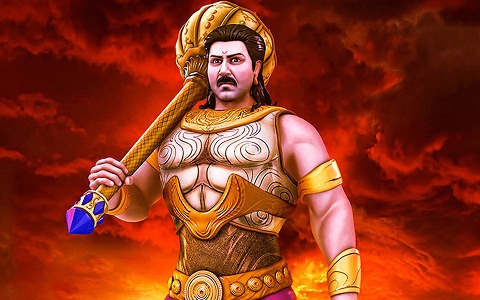
Bhima is the strongest and the bravest among the Pandavas, who is known for his undying love and devotion towards his mother and brothers. He is also known for his anger and always stands in objection to the wrong doings of the Kauravas, but is stopped by Yudhishthira every time.
5. Karna
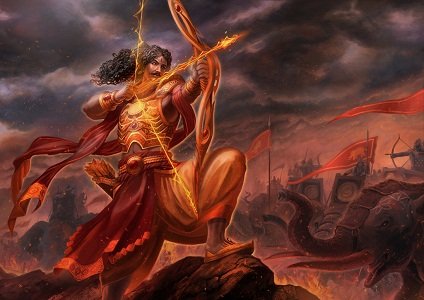
Another key character in the Mahabharata is Karna, who is the half brother of the Pandavas, but a loyal friend of Duryodhana. He suffers because of being loyal to the wring man, but is known as one of the bravest and the most charitable character in the epic.
4. Yudhisthira
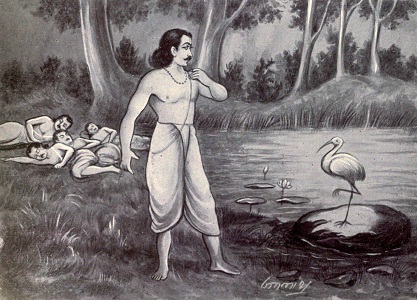
Next among the best characters in the Mahabharata Gatha is Yudhishthira, the eldest of the Pandavas. He is called the Dharmaraaj because of his love for righteousness and truth. He is an obedient son and doting brother, but loses his wife in a gambling game, which is the weakest point of his character.
3. Arjuna
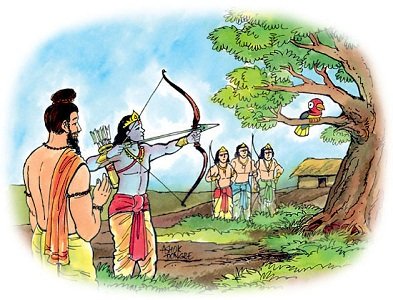
Arjuna is the best archer in the world, besides being the most favorite disciple of Guru Dronacharya. He is a devoted brother and a loving husband, but is bound by family ties, which is why he accepts sharing his wife Draupadi with his brothers on the orders of his mother Kunti. He also wins the battle of Mahabharata for the Pandavas, by adopting the teachings of Lord Krishna.
2. Lord Krishna
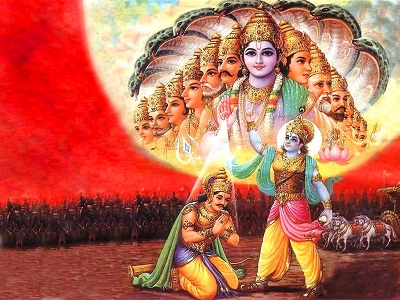
Lord Krishna appears as the wittiest characters in the Mahabharata Gatha, in which he shows a multi faceted personality. He is the one who shows the path of righteousness to Arjuna in the battle and guides him that killing his kin will not be wrong, as it is necessary to bring the evil Kauravas to their end.
1. Bhishma Pitamah
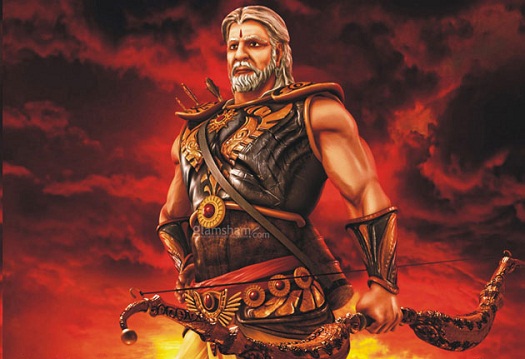
Bhishma Pitamah is considered as the central character of the Mahabharata Gatha, who dedicated his entire life towards the betterment of Hastinapur. His loyalty can be judged from the fact that he supported the Kauravas in the battle of Mahabharata, even when he knew that they were wrong. He sacrificed his life and died on a bed of arrows, because he wanted the battle to go in the right way.
Eklavya, Ghatotkacha, Nakul and Sehdev are some other positive characters in Mahabharata Gatha. All these characters are guiding stars for mankind in the modern world too.
Exploring the Fascinating Facts about the Mahabharata
Here are some fascinating facts about the Mahabharata, shedding light on its vastness, influence, and enduring legacy.
1. Epic Scale: The Mahabharata is one of the longest known epic poems in the world, consisting of over 200,000 verses or shlokas. It is roughly ten times the length of the Iliad and the Odyssey combined and about four times the length of the Ramayana.
2. Authorship and Composition: Traditionally attributed to the sage Vyasa, the composition of the Mahabharata is believed to have taken place between the 8th and 9th centuries BCE. However, it is important to note that the epic went through various stages of development over several centuries, with additions and modifications by different authors and storytellers.
3. Historical and Mythological Elements: The Mahabharata seamlessly blends historical events and mythological elements. While it is primarily known as a legendary tale, the epic contains references to real historical figures, ancient kingdoms, and cultural practices. This amalgamation of history and mythology adds depth and richness to the narrative.
4. Core Conflict: Pandavas vs. Kauravas: At the heart of the Mahabharata lies the intense conflict between two sets of cousins, the Pandavas and the Kauravas. The Pandavas, led by the righteous Yudhishthira, and the Kauravas, led by the ambitious Duryodhana, engage in a power struggle for control of the kingdom of Hastinapura.
5. The Great War of Kurukshetra: The epic culminates in the epic battle of Kurukshetra, where both sides face each other in a war that lasts for eighteen days. The war involves elaborate battle strategies, heroic feats, and a multitude of fascinating characters.
6. Krishna and the Bhagavad Gita: Lord Krishna, an avatar of Lord Vishnu, plays a central role in the Mahabharata. He serves as a guide and charioteer to the Pandava warrior, Arjuna. The discourse between Krishna and Arjuna, known as the Bhagavad Gita, takes place on the eve of the battle and encompasses profound philosophical teachings on duty, morality, and the nature of life.
7. Ethical Dilemmas and Moral Lessons: The Mahabharata grapples with complex ethical dilemmas, presenting various shades of grey in its characters’ actions and choices. The epic provides invaluable moral lessons on righteousness, duty, loyalty, family values, and the consequences of actions.
8. Cultural Influence: The Mahabharata has had a profound impact on Indian culture and society. It has influenced literature, performing arts, sculpture, painting, and various other forms of artistic expression. The epic’s characters, such as Krishna, Arjuna, and Draupadi, have become iconic figures in Indian mythology.
9. Adaptations and Translations: The Mahabharata has been translated into numerous languages and has inspired countless adaptations across different mediums, including television, film, theater, and literature. These adaptations continue to keep the epic alive in popular culture.
10. Relevance and Global Appeal: The themes explored in the Mahabharata, including the complexities of human nature, moral dilemmas, and the search for truth and enlightenment, resonate with people from diverse backgrounds. The epic’s universal messages continue to captivate and inspire individuals around the world.
Santosh Kumar is a Professional SEO and Blogger, With the help of this blog he is trying to share top 10 lists, facts, entertainment news from India and all around the world.
